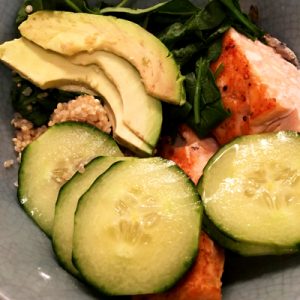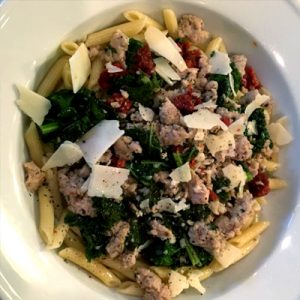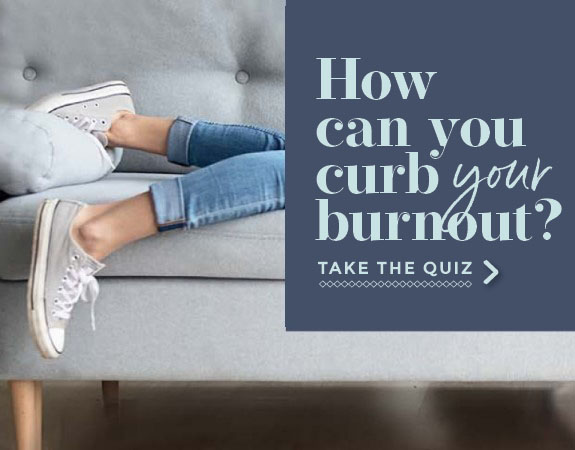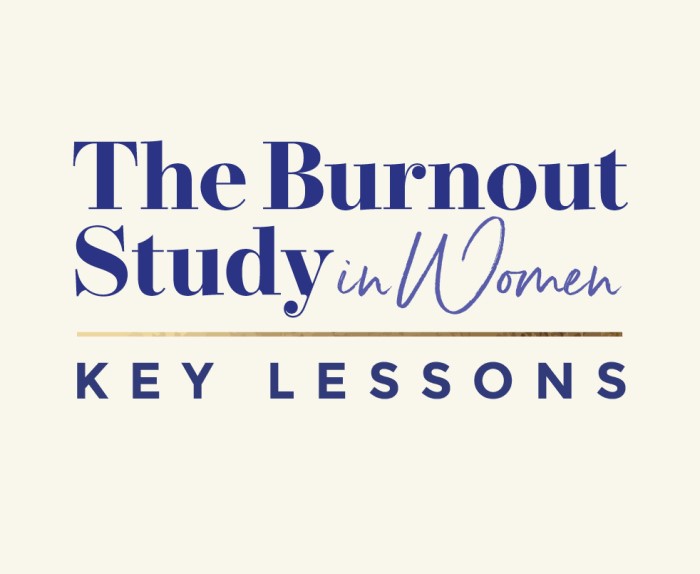For children under 5, as little as a single adult dose can be deadly.
If you have children, you’ve likely heard of the impact of poisonings – that unintentional poisonings are the 2nd leading cause of death in children ages 1-19.
According to the national 2022 report from the American Association of Poison Control Centers, in 2022 there were 2.0 million toxic exposures, with 40% of those being in children under 5. What you may not know, is that there are several medications where a single dose can be deadly to a small child – and many of these may be medications that you just have laying around the house.
Even more worrisome? Sometimes after some of these pills, children can appear totally fine for a period of time, and then quickly become worse. As an ER doctor, I’ve seen children who were totally fine at home, and then quickly started to deteriorate, and go from ingestion to near-death in just two hours – even after taking only a pill or two. So, here’s a list of the most dangerous and common ones – and a few that I’m sure will surprise you – and tips for keeping your kiddos safe.
Even parents who keep medicines out of their children’s reach are at risk of such an emergency; the Emergency Medicine Clinics of North America notes that in 50 percent of all childhood accidental poisonings, the medication bottle was only “out” for a short amount of time as it was being used.
What to do if you even think your child may have ingested a pill:
- Immediately call 911 if your child is emergently ill, or the National Poison Control Center (PCC) Hotline – 1-800-222-1222, if you’re not sure what to do. This is a free service, in which you are immediately linked with a health professional. They will speak with their poison control physician toxicologists (many of whom are ER doctors), and instruct you what to do, whether that’s to watch them at home, try to give them any specific remedy, or when to seek medical care. (As ER doctors,
- If you’d prefer, the PCC also has an online web portal, WebPoisonControl where you can enter your information online.
steps (that you may not have thought of) to prevent this:
- Out of reach + Original packaging: Have all medications up out of reach, in a closed cabinet, in their original packaging.
- Caution at the moment you take the med: Many ingestions by children happen in the few minutes that a parent or grandparent took down their medications to take it. According to the Emergency Medicine Clinics of North America, 50% of childhood accidental poisonings happened when the medication bottle was just out for a very short period of time, while an adult was taking the medication. Be very aware of this short vulnerable period, and take the medication as soon as you take it out of the jar.
- Don’t us the “pill in tissue” method: Don’t put a pill in a tissue in your pocket to take it later, or to, for instance, go to the kitchen to get water. Too often, we see an adult do this, and then 45 minutes later they go to take their medication, and realize that the tissue fell out on the floor (or the pill did), and was swallowed by a child.
- Grandmother’s purse syndrome: Got guests? If they keep their medications in their purse / bag, make sure those are immediately taken up to the guest room and put out of reach. We call this “Grandmother’s purse syndrome” – grandma comes to visit, immediately puts her bag on the floor to see the grandbabies. That bag is full of her medications in easy-open pill boxes, and kiddos LOVE to get into them.
- Check hotel floors: Staying at a hotel? If you have littles, do a quick visual sweep of the floor, before you let your little loose. Because if there’s a pill there (left by the prior tenant or housekeeping), I promise you, your little will find it. We have parents come in all the time, having found a pill in their child’s mouth that they picked up off the hotel room floor.
pills that can kill a child in 1-2 doses:
Examples: Diltiazem (Cardizem, Cartia), Verapamil, Amlodipine (Norvasc), Nifedipine, Metoprolol (Toprol), Digoxin (Lanoxin)
Just one pill of these can result in small child developing dangerously low heart rate, blood pressure, and even seizures. Effects typically take place 1-5 hours after taking the medication, but in extended release pills, those results may happen more selowly – over 12 hours or so.
Some of these medications have “reversal” agents, but if a parent does not know that their child took the pill, by the time they come into the ER (and we figure out what happened), it can be too late. This is why these medications scare me, as an ER doctor and mama.
Muscle Rubs
Brand names: Vicks VapoRub, Ben-Gay, Tiger Balm, Save the Baby
You’ll find camphor in many over the counter products, including ones to put on baby’s chest for cough. And as a mom of 3, I know that when your kiddo is coughing, you want to do anything possible to help! However, I always caution parents with using chest rubs on children – a little is ok, but use it sparingly, so that baby cannot get any onto their hand that they then swallow.
Symptoms of ingesting camphor occur in 10-20 minutes – often the first sign is a seizure. Children may become restless, even hyperactive, and some parents note that the skin around their lips turned blue. Eventually, this can progress to stopping breathing and even a coma. We’ve seen toddlers who took only 1-2 teaspoons of product develop seizures within 10 minutes, and death after even just 1 teaspoon.
The National Poison Control Centers shared a report of a child with a cough, whose mother was dissolving camphor tablets in water to inhale (a common practice that you can purchase in any drug store or on Amazon), but while preparing it, the child swallowed approximately half a tablet. Approximately 30 minutes later, she started seizing, and eventually went into cardiac arrest at the hospital and could not be resuscitated. That’s why – for me as an ER doctor, when my kiddos have coughs, I tend to stay away from any camphor-based cough treatment.
Narcotic Pain Medications
Oxycodone (Oxycontin, Percocet), Hydrocodone (Vicodin, Lortab), Dilaudid, Fentanyl
The more we see opiates prescribed, the more we see deaths in young children from them. Opiates and other pain medications were the top cause of death due to substances in children under 5, accounting for 25% of all deaths < 5 (Table 17E).
According to one study, even half a tablet in an infant of hydrocodone can be lethal, and 50% of toddlers who swallowed 5 mg rapidly deteriorated in one hour, with lethargy, slowed breathing, and eventual coma.
According to one study, 50 percent of toddlers who took two 5 mg tablets became rapidly ill within an hour. For an infant, even half of a tablet of hydrocodone can be lethal.
We’ve seen stories of a young toddler who took just two tablets of Oxycontin when her mother went to answer the door – and was asymptomatic for 4 hours, at which point she suddenly developed cardiac arrest.
In these cases, the antidote is immediate Narcan (Naloxone), which is now ubiquitous on ambulances. However, if a child took an extended release pill, they’ll need multiple doses of Narcan (and likely a Narcan infusion and admission).
Aspirin and Oil of Wintergreen
Acetylsalicylic Acid (Aspirin, Ecotrin, Oil of Wintergreen)
Aspirin – it’s an old-school medication and everywhere – and also deadly to littles. Especially in the concentrated “oil of wintergreen” form, it smells good, tempting curious toddlers to swallow it – but just one teaspoon of oil of wintergreen contains the equivalent of almost 90 baby aspirins.
Baby aspirin, and especially liquid (which can have a higher concentrated formulation) can lead to rapid onset of symptoms, and as little as 4 ml can be fatal.
Overdoses in children can lead to vomiting, diffuse sweating, and eventually to brain swelling, coma, seizures, lethargy, and even death.
Anti-depressants or Anti-migraine medications
Amitriptyline (Elavil), Imipramine (Tofranil), Buproprion (Wellbutrin, Zyban)
After pain medications, antidepressants are the second highest cause of accidental death from poisoning in children younger than 6, according to the 2004 report by the AAPCC.
In each of these medications, ingestion by a child can lead to seizures, heart arrythmias and heart block, and unresponsiveness. These symptoms can be delayed for 4-6 hours, and then start suddenly.
In one case, the parent was preparing to take their migraine medication, and left it out for just a second and looked away, during which time the toddler grabbed and swallowed it, leading to life-threateningly low blood pressure and lethargy.
Medication patches (for pain, blood pressure, etc)
(Lidocaine patches, Clonidine, Fentanyl)
OK – this ups the gross factor, but every year, poison control centers get calls regarding toddlers who have ingested dangerous medication – by LICKING a USED medication patch. I know. It gives me the willies to even think about.
But think about it – kids LOVE stickers. LOVE them. And when an adult takes off their patch and tosses it in the trash, it typically still has enough active medication to be toxic to the small body of a child. So, the kiddo finds it in the trash, licks it, and ingests the medication.
In one case report, from a 1988 issue of the Annals of Emergency Medicine, a 9-month old boy sucked on a Clonidine patch that had been thrown away after being worn for 5 days, and developed a life-threatening low blood pressure, lethargy, and had to stay in the ICU.
Have adults with patches do this EVERY time they discard them – fold the patch onto itself, so that the sticky side (with the medication) sticks to itself, making it impossible to pry apart, and access the medication. Then, wrap it in a tissue so it doesn’t even look like a sticker, and throw it away.
Eye Drops and Nasal Sprays
Oxymetazoline (Afrin, Dristan, Duramist), Naphazoline (Clear Eyes)
While these medications are designed to be absorbed slowly through the eye or nasal mucosa, when a child drinks them, as little as 6 ml can cause lethargy and coma.
Diabetes Drugs
Glyburide (Diabeta), Glipizide (Glucotrol)
In adults, these medications help their blood sugar stay at a healthy, lower level. But in children, they cause dangerously low levels of blood sugar, seizures, and coma. Symptoms can take 1-6 hours to develop. Children also have less energy stores than adults do, making them even more vulnerable.
All my best,
- Dr. Darria







